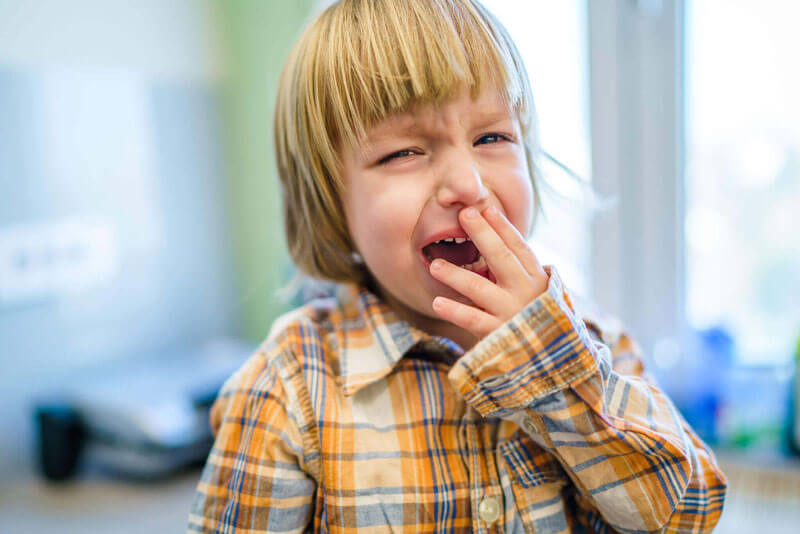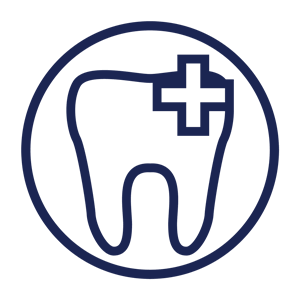
Tooth Trauma in Children and Its Effects on Primary Teeth
Young, growing children are accident prone. Learning to crawl, walk, play, and run are trial and error activities. This means falling, banging their heads, crashing into things, being hit by flying objects such as toys, and experimenting with what is chewable and what is not are some of the most common issues parents must deal with.
You may be surprised to learn that in children aged 0 to 6, injuries to the teeth and mouth comprise about 20% of all physical injuries they will experience. Traumatic tooth injuries can result in discoloration of teeth as well as chipping, fracturing, and tooth loss.
What to do in the event of tooth injuries in children

The dentist will examine the chipped tooth or teeth involved and take x-rays to see whether the root is fractured or will disturb or affect any underlying permanent teeth.
If a permanent tooth is knocked out in older children, either gently replant it in the socket or place it in a small jar of milk (never water) and take it to the dentist who may attempt to replant and save it. However, if a baby tooth has been knocked out, it likely cannot be replanted. In most cases, treatment will be minimal or not even necessary, but a dentist needs to determine that.
What happens to the injured tooth?
Traumatic injuries often cause tooth discoloration. In some children, the gray or brownish color will fade or even disappear, but sometimes it will be permanent. Over time, a child’s injured tooth also may exhibit other clinical or radiographic symptoms such as decay, infection, or abscess.
If a child’s tooth or teeth involved in an accident later develop yellow, brown, gray, or black staining, a dentist should be seen as soon as possible to determine if the tooth pulp is involved, as immediate treatment may save the pulp and nerves. Blood may have accumulated inside the tooth as well, which can make it appear darker.
After teeth trauma, long-term effects can include malformation and altered eruption of underlying permanent teeth, impacted teeth, or intrusion, which is when the tooth is displaced into the gum tissue. An avulsion fracture may also occur, which is when a bone fragment is separated from the jawbone by a high-impact collision during sports, gymnastics, or other activities that involve sudden changes in direction, leaping, or kicking. These more serious injuries can result in various anomalies of the permanent teeth.
Short-term care
A child’s injured tooth and surrounding tissues should heal over time with good oral hygiene homecare. Swabbing the surrounding gum tissue with alcohol-free chlorhexidine or an over-the-counter mouthwash for a week may be recommended to prevent food debris and plaque (which will contribute to discoloration) from building up and to reduce bacterial load, both of which can lead to cavities. Eating only soft foods for a week or two is usually advised to avoid further injury or irritation.
Children may not, or even be able to, report feeling pain so it is important to monitor for swelling or increased tooth mobility if the tooth became loose when it was injured. Swelling may indicate infection or the beginning of an abscess. If anything unusual becomes apparent, contact the dentist as soon as possible.
Non-traumatic causes of tooth discoloration in children
Parents often notice a color difference when the dentition is a mix of permanent and primary teeth. Permanent teeth have more dentin than primary teeth, which can make them appear yellow next to lighter colored baby teeth. Cavities and amalgam fillings also tend to cause color variations in primary teeth.
Tooth enamel is translucent and reflects light. Many things can affect enamel translucency. Foods and drinks containing acids (such as citrus, tomato, curry), tannins (including tea, coffee, red grape juice), and citric acids (a food preservative, or sports drinks and sour candy) can all stain teeth over time. Plaque build-up due to poor oral hygiene may also result in tooth discoloration.
Antibiotics, especially tetracycline, can cause tooth discoloration in children. However, doxycycline and minocycline may also cause discoloration. If either the mother (during pregnancy or while breastfeeding) or a child (during tooth mineralization) takes antibiotics, the child’s teeth may initially look bright yellow and then darken to brown. Medications or vitamins containing iron can also cause brown staining.
Excessive fluoride exposure can result in fluorosis, which can be white or dark colored. This may occur if baby formula is regularly mixed with water containing fluoride.
There are various ways to treat these types of discoloration, including whitening, veneers, and dental crowns. Crowns are especially effective for protecting remaining tooth structure and improving facial esthetics. Cheng Crowns manufactures pediatric zirconia crowns that have high flexural strength and fracture toughness that will reflect light the way surrounding natural teeth do, rather than appear dull compared to the child’s other teeth. These zirconia crowns will protect the underlying primary tooth from further trauma, staining, or decay until it naturally falls out.
The importance of protecting primary teeth
It is important to keep primary teeth healthy because they are necessary for chewing properly, guiding the permanent teeth into position, and for the facial muscles and jawbones to develop normally. They are also important for the development of speech and facial esthetics.
If primary teeth are lost or compromised, the dentist will continually assess whether crowding or crooked teeth will result when the permanent teeth eventually erupt and recommend potential treatments.
Cheng Crowns offers the latest designs in pediatric zirconia crowns. Our redesigned crowns are simple to seat, have a large internal cavity, are very high strength, and look more like natural teeth than non-zirconia crowns. Click here to compare them to classic pediatric crowns.
Resources
Avulsion Fracture. Boston Children’s Hospital.org. Available at https://www.childrenshospital.org/conditions/avulsion-fracture#:~:text=What%20is%20an%20avulsion%20fracture,direction%2C%20leaping%2C%20and%20kicking. Accessed April 5, 2023.
Dental Topics. Doc Bresler’s Cavity Busters. Available at https://www.cavitybusters.com/dental-topics.php#dental_emergencies. Accessed April 5, 2023.
Levine R. What Happens if my Child Falls and Bumps Their Teeth? January 19, 2021. Available at https://growingsmilespa.com/blog. Accessed April 5, 2023.
Pediatric Dentistry Mystery: Why are my child’s permanent teeth coming in yellow? January 26, 2022. Smiles Dentistry for Kids. Available at: https://smilesdentistry4kids.com/pediatric-dentistry-mystery-why-are-my-childs-permanent-teeth-coming-in-yellow/#:~:text=This%20type%20of%20discoloration%20is,%2C%20light%2Dcolored%20baby%20teeth. Accessed April 5, 2023.
Tooth discoloration. Cleveland Clinic. Available at https://my.clevelandclinic.org/health/diseases/10958-tooth-discoloration. Accessed April 8, 2023.
Why Are My Child’s Teeth Yellow and What Can I do About it? Healthline. Available at https://www.healthline.com/health/childrens-health/yellow-teeth-kids#causes. Accessed April 8, 2023.
Zhou MX. Infant and toddler teeth. My child’s baby teeth seem discolored. Should I be worried? Mayo Clinic. Available at: https://www.mayoclinic.org/healthy-lifestyle/infant-and-toddler-health/expert-answers/baby-teeth/faq-20057765. Accessed April 8, 2023.
